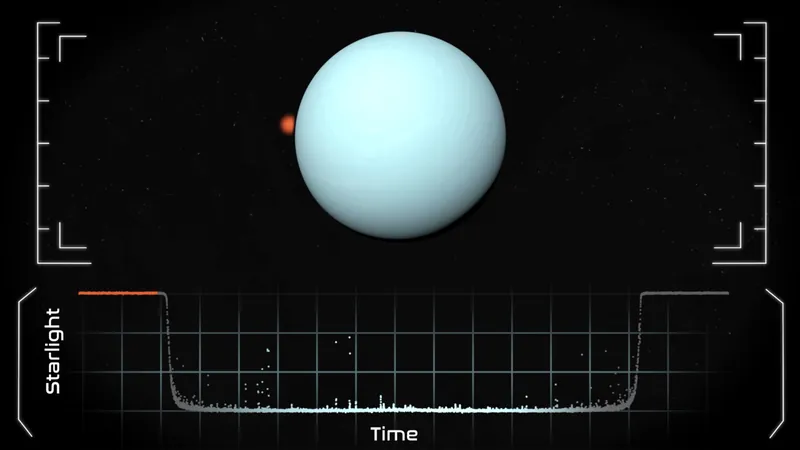
NASA's Stunning Encounter: Uranus Dances in Front of Distant Star!
2025-04-27
Author: Jacques
This month, NASA researchers got an extraordinary opportunity to delve into the mysteries of Uranus! The ice giant made a rare appearance by passing between Earth and a distant star, a cosmic spectacle known as a "stellar occultation."
On April 7, for one extraordinary hour, observers across western North America witnessed this celestial event. It marked the first bright stellar occultation of Uranus since 1996, prompting NASA to assemble an international team of over 30 astronomers. Utilizing 18 observatories, they were well-prepared to capture crucial data.
William Saunders, a planetary scientist at NASA's Langley Research Center, expressed his gratitude for the collaboration, stating, "This was the first time we have collaborated on this scale for an occultation." The observations allowed scientists to measure the light curve and examine the atmospheric properties of Uranus at various altitudes.
Unlocking the Secrets of Uranus' Atmosphere
By capturing data during this rare event, scientists measured the temperatures and chemical composition of Uranus' stratosphere, revealing significant changes since the last occultation in 1996. This newly collected data could pave the way for future exploration of this enigmatic planet.
Currently, Uranus lies about 2 billion miles (3.2 billion kilometers) from Earth, lacking a solid surface. Instead, it's clouded with a mixture of water, ammonia, and methane, earning its nickname as an ice giant. Its atmosphere predominantly consists of hydrogen and helium, making it a treasure trove for atmospheric science.
Why This Discoveries Matter!
Emma Dahl, a postdoctoral scholar at Caltech who played a pivotal role in gathering observations, pointed out that the absence of solid surfaces on gas and ice giant planets, like Uranus and its siblings, creates unique conditions for scientific inquiry. "This allows us to study cloud formations, storms, and wind patterns without the muddling effects of a surface," she explained.
Excitingly, NASA forecasts that Uranus will occult several dimmer stars over the next six years, with the next significant event featuring a star even brighter than the one observed this month scheduled for 2031. Prepare for more cosmic revelations to come!









 Brasil (PT)
Brasil (PT)
 Canada (EN)
Canada (EN)
 Chile (ES)
Chile (ES)
 Česko (CS)
Česko (CS)
 대한민국 (KO)
대한민국 (KO)
 España (ES)
España (ES)
 France (FR)
France (FR)
 Hong Kong (EN)
Hong Kong (EN)
 Italia (IT)
Italia (IT)
 日本 (JA)
日本 (JA)
 Magyarország (HU)
Magyarország (HU)
 Norge (NO)
Norge (NO)
 Polska (PL)
Polska (PL)
 Schweiz (DE)
Schweiz (DE)
 Singapore (EN)
Singapore (EN)
 Sverige (SV)
Sverige (SV)
 Suomi (FI)
Suomi (FI)
 Türkiye (TR)
Türkiye (TR)
 الإمارات العربية المتحدة (AR)
الإمارات العربية المتحدة (AR)